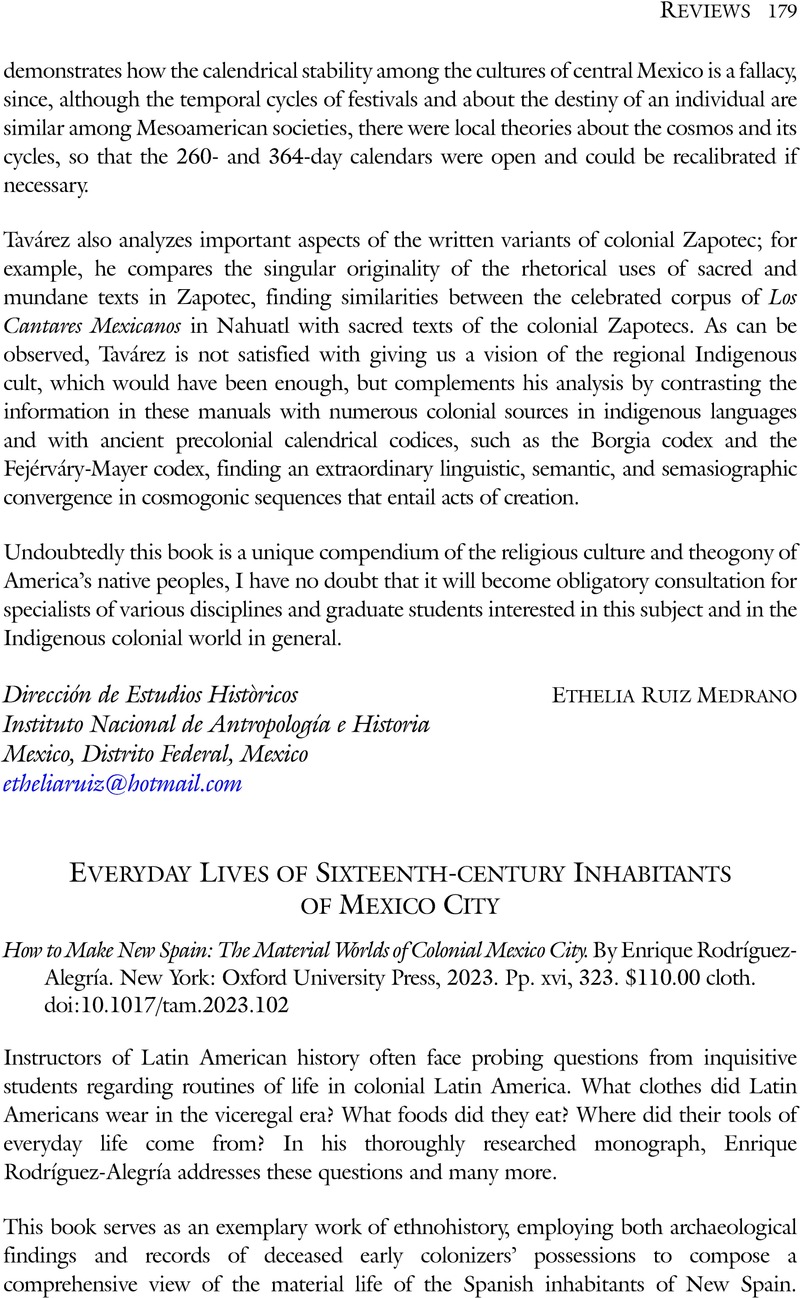No CrossRef data available.
Article contents
Everyday Lives of Sixteenth-century Inhabitants of Mexico City - How to Make New Spain: The Material Worlds of Colonial Mexico City. By Enrique Rodríguez-Alegría. New York: Oxford University Press, 2023. Pp. xvi, 323. $110.00 cloth.
Review products
How to Make New Spain: The Material Worlds of Colonial Mexico City. By Enrique Rodríguez-Alegría. New York: Oxford University Press, 2023. Pp. xvi, 323. $110.00 cloth.
Published online by Cambridge University Press: 21 March 2024
Abstract
An abstract is not available for this content so a preview has been provided. Please use the Get access link above for information on how to access this content.

- Type
- Book Review
- Information
- Copyright
- Copyright © The Author(s), 2024. Published by Cambridge University Press on behalf of Academy of American Franciscan History


